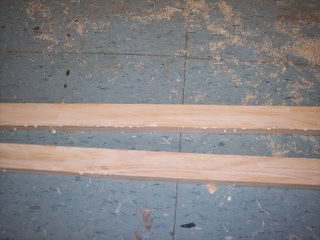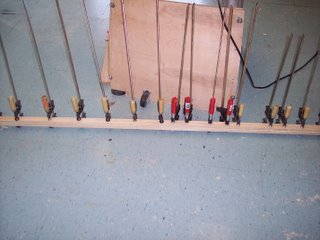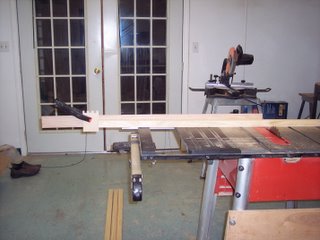Ever since I moved into this house (has it been 3 years already?) I have been remodeling one room to the next. I started in the master closet then moved into the master bathroom where the remodeling stalled.
There are a lot of reasons I stalled on the bathroom. The first is that I have a hard time making up my mind. I often spend more time planning and choosing between option then I do actually doing the work. Case in point: I've been trying to decide how I would finish the walls for over a year. Once I decided how I wanted to paint it, it took 2 hours to complete (pics will be posted to my
Flickr account.
One major decision that has been holding me back somewhat is the vanity. I was not happy with any of the commercial vanity designs I found. They all looked to conventional, too ugly, or they would not go with the rest of the room. So I decided to design my own vanity.
First I modeled it in Carrara Studio, to get a feel for the construction, and the amount of materials involved. Next I built a
prototype using knotty pine and cheap plywood. I needed a new workbench anyway so this would be a way to kill two birds with one stone.
Then I stalled out again trying to decide what kind of top I wanted to put on it. In the end I decided on a speckled gray granite top with an under mounted sink. Now the construction is ready to start. I've purchased all the wood I think I need (if I did the calculations correctly) and the pocket screws I need.
The design is basically to build a frame out of 2"x2" boards upon which the framing for the drawers and door hung. The frame is held together using glue and pocket screws. I know I could use a more involved and more traditional joint, such as a mortise and tendon, but pocket screws are strong enough and much easier to use. The drawers use a halfblind dove tail on the front and a rabbit on the back. I also use drawer slides on the drawers, even though doing so forces a smaller drawer.
For the real vanity, I decided to use clear pine for the frame and the front, knotty pine for the internal framing, 1/4" birch plywood for the side panels, and 1/2 pine for the drawers (I'll use 1/2" birch for the front). I really like the contrast the two woods make on the prototype. MY choice of clear pine does have a problem. I've been all over and I can not get clear pine 2"x2" boards that are long enough. So I'm going to have to join two 1"x2" boards together for the main frame.
The vanity I'm building is 48"x21"x32" and my goal is to put this vanity together for under $600 (excluding the faucet). The list of materials thus far:
One granite vanity top: $300.00
One box 1 1/4" course thread pocket screws: $3.48
One box 1" course thread pocket screws: $3.48
Ten 1"x2"x8' clear pine: $29.50
Four 1"x2"x8' knotty pine: $6.32
Eight 1"x2"x6' clear pine: $18.24
Two 1/4"x4'x4' birch plywood: $26.58
Two 15/32"x4'x4' pine plywood: $27.98
I've already got wood glue and enough 1/2" birch plywood for the drawer fronts.
Total so far: $426
I will be posting me progress with pictures as the vanity building progresses.




